In the realm of yoga, there exists a pose that embodies the grace and allure of a mermaid, offering a deep and transformative experience for practitioners. Known as Mermaid Pose, or Eka Pada Rajakapotasana in Sanskrit, this pose unveils a pathway to enhanced flexibility, improved posture, and a sense of inner serenity.
Embrace the journey as we delve into the intricacies of Mermaid Pose, exploring its benefits, techniques, and modifications. Discover how this pose, like a mermaid gliding through the ocean’s depths, can unlock a wellspring of physical and mental well-being.
Benefits of Mermaid Pose
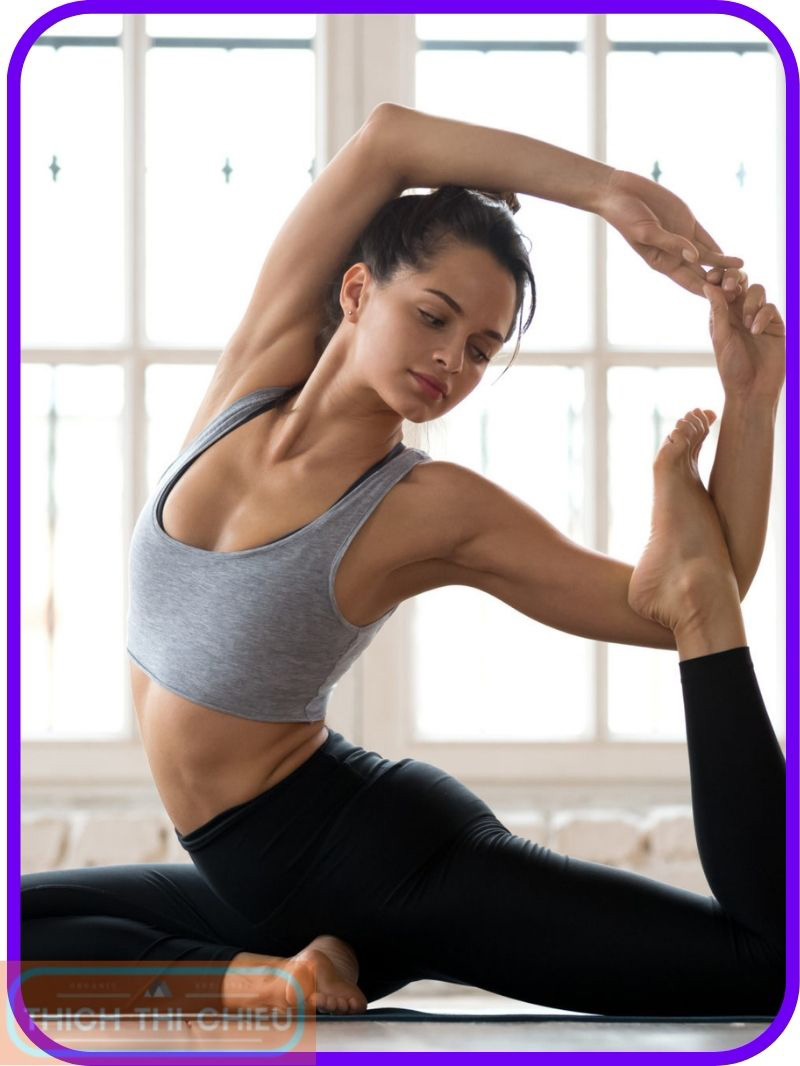
Mermaid Pose is not merely a physical challenge; it’s an invitation to holistic well-being. The pose offers a myriad of benefits that extend far beyond the confines of the yoga mat.
Enhanced Flexibility
Mermaid Pose is a masterclass in hip and groin opening, promoting remarkable flexibility in these crucial areas. This improved flexibility can alleviate pain and discomfort, enhance range of motion, and reduce the risk of injury.
Strengthened Hamstrings
The pose also targets the hamstrings, the powerful muscles along the back of the thigh. By stretching and strengthening these muscles, Mermaid Pose enhances stability, reduces fatigue, and improves overall athletic performance.
Open Heart and Chest
The gentle backbend element of Mermaid Pose encourages the opening of the heart and chest, promoting deeper breathing, improved posture, and a sense of emotional openness.
Stress Reduction and Relaxation
The meditative nature of Mermaid Pose, coupled with its deep stretches, can effectively reduce stress, anxiety, and tension. It promotes a sense of calm and tranquility, fostering a harmonious mind-body connection.
How to Do Mermaid Pose
Starting Position: Downward-Facing Dog
Before embarking on Mermaid Pose, ensure your body is adequately warmed up to prevent injury. Begin in the familiar position of Downward-Facing Dog.
- Start on your hands and knees, with your hands shoulder-width apart and your knees hip-width apart.
- Spread your fingers wide, pressing your palms firmly into the mat.
- Lift your hips up and back, forming an inverted V-shape with your body.
- Keep your heels reaching towards the floor, lengthening your spine and engaging your core muscles.
- Relax your head and shoulders, allowing them to hang naturally.
Placing the Right Knee
From Downward-Facing Dog, gently bend your right knee and bring it forward, placing your right shin perpendicular to the floor.
- Ensure your right thigh is parallel to the front edge of your mat.
- Maintain a straight spine, keeping your head aligned with your spine.
- Engage your quadriceps and glutes to stabilize your right leg.
Lowering the Left Hip
- Slowly lower your left hip towards the floor, keeping your left leg extended straight back.
- Your left heel may not reach the floor initially, and that’s okay. Gradually lower your hips as far as you can without straining.
- Maintain a straight spine throughout the movement.
- Keep your left leg active, engaging your hamstrings and glutes.
Placing the Hands
- Gently lower your forearms to the floor, placing your hands shoulder-width apart.
- Position your hands directly under your shoulders, providing support for your upper body.
- Keep your elbows slightly bent, allowing for a gradual deepening of the pose.
Pressing Hips Forward
- Gently press your hips forward, maintaining a straight spine and extended left leg.
- Avoid collapsing your chest or rounding your shoulders.
- Engage your core muscles to stabilize your pose.
Reaching Overhead (Optional)
For an additional challenge and deeper stretch, reach your hands overhead.
- As you press your hips forward, simultaneously reach your hands towards the ceiling.
- Keep your spine long and your gaze focused upwards.
- If reaching overhead strains your shoulders, gently lower your hands to your chest or hips.
Tips for Beginners
Utilizing Blocks or Straps
Blocks and straps are invaluable tools for beginners embarking on the Mermaid Pose journey. They provide support and stability, allowing you to gradually deepen the pose without compromising alignment or safety.
- Blocks: Blocks serve as a bridge between your hand and the floor, reducing strain on your shoulders and wrists. Place a block under your right hand when you reach for the floor, adjusting its height to suit your comfort level.
- Straps: Straps offer a gentle assist in deepening the stretch and maintaining balance. Loop the strap around your left foot, keeping a slight bend in your left knee. As you press your hips forward, gradually release the strap to deepen the stretch.
Modifying the Pose
Mermaid Pose demands flexibility in the hips, hamstrings, and groins. Beginners may find it challenging to maintain a straight front leg and deep hip hinge. Modifications allow you to adjust the pose to your current level of flexibility, preventing strain and promoting gradual improvement.
- Bent Front Leg: If extending your left leg straight back causes discomfort, bend your left knee slightly. This modification reduces the intensity of the hamstring stretch, allowing you to focus on opening the hips and groins.
- Reduced Hip Hinge: Instead of lowering your hips completely to the floor, lower them as far as you can without straining. The goal is to gradually deepen the hip hinge over time.
- Elevated Hands: If reaching overhead strains your shoulders, keep your hands on the floor in front of you. This modification maintains support for your upper body while allowing you to focus on the hip and groin stretch.
Mermaid Pose Variations
Mermaid Pose, or Eka Pada Rajakapotasana in Sanskrit, is a graceful and challenging yoga pose that offers a multitude of benefits, including enhanced flexibility, improved posture, and reduced stress. As you progress in your yoga practice, you may seek variations of Mermaid Pose to further deepen the stretch, challenge your balance, and explore new dimensions of well-being.
Bound Mermaid Pose
Bound Mermaid Pose, also known as Baddha Eka Pada Rajakapotasana, adds an extra layer of challenge to the traditional Mermaid Pose. This variation intensifies the stretch in the hips, groins, and hamstrings, promoting even greater flexibility.
- Starting Position: Begin in Mermaid Pose, with your right knee bent and your left leg extended straight back.
- Binding Your Foot: Loop a yoga strap around your left ankle, securing it firmly but not too tightly.
- Deepening the Stretch: Gently press your hips forward, keeping your spine long and your left leg active.
- Grasping the Strap: With both hands, grasp the strap and pull it towards your body, deepening the stretch in your hips and groins.
- Maintaining Balance: Engage your core muscles and focus on maintaining balance as you intensify the stretch.
Revolved Mermaid Pose
Revolved Mermaid Pose, also known as Parivrtta Eka Pada Rajakapotasana, introduces a twist to the traditional Mermaid Pose. This variation enhances spinal mobility, improves core strength, and promotes detoxification.
- Starting Position: Begin in Mermaid Pose, with your right knee bent and your left leg extended straight back.
- Initiating the Twist: Gently rotate your torso to the right, keeping your left hip grounded and your left leg active.
- Reaching Your Hand: Extend your right arm overhead, reaching towards the ceiling.
- Gazing Upwards: Lift your gaze towards your extended hand, maintaining a long and graceful spine.
- Balancing and Deepening: Engage your core muscles and gradually deepen the twist, feeling the stretch through your torso and hips.
Supported Mermaid Pose
Supported Mermaid Pose, also known as Supported Eka Pada Rajakapotasana, offers a gentler approach to Mermaid Pose, utilizing props to provide support and stability. This variation is ideal for beginners or those with limited flexibility.
- Gathering Your Props: Place a block under your right hand and a bolster or folded blanket under your left hip.
- Positioning the Block: Align the block directly under your right shoulder, providing support for your upper body.
- Adjusting the Bolster: Place the bolster or folded blanket under your left hip, lifting it to a height that allows you to maintain a straight left leg without discomfort.
- Exploring the Pose: Gently press your hips forward, keeping your spine long and your left leg active.
- Honoring Your Body: Gradually deepen the pose as your flexibility and strength improve, always respecting your body’s limitations.
Mermaid Pose is a journey of self-discovery, challenging you to explore the depths of your flexibility, strength, and inner peace. Embrace the process, honor your body’s limitations, and celebrate your progress along the way. With consistent practice, you’ll uncover the mermaid within, gliding through the currents of well-being and grace. Hopefully, the above article of TTC has provided you with useful information. If you have any questions or concerns, please leave a comment below.
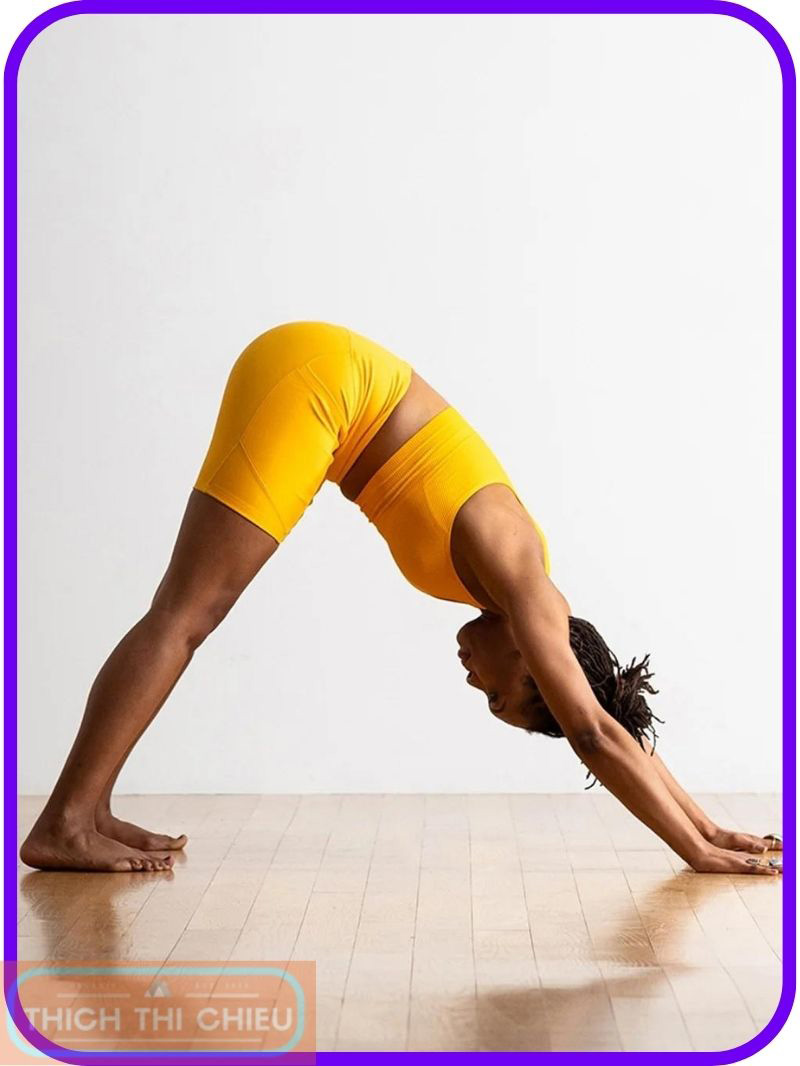
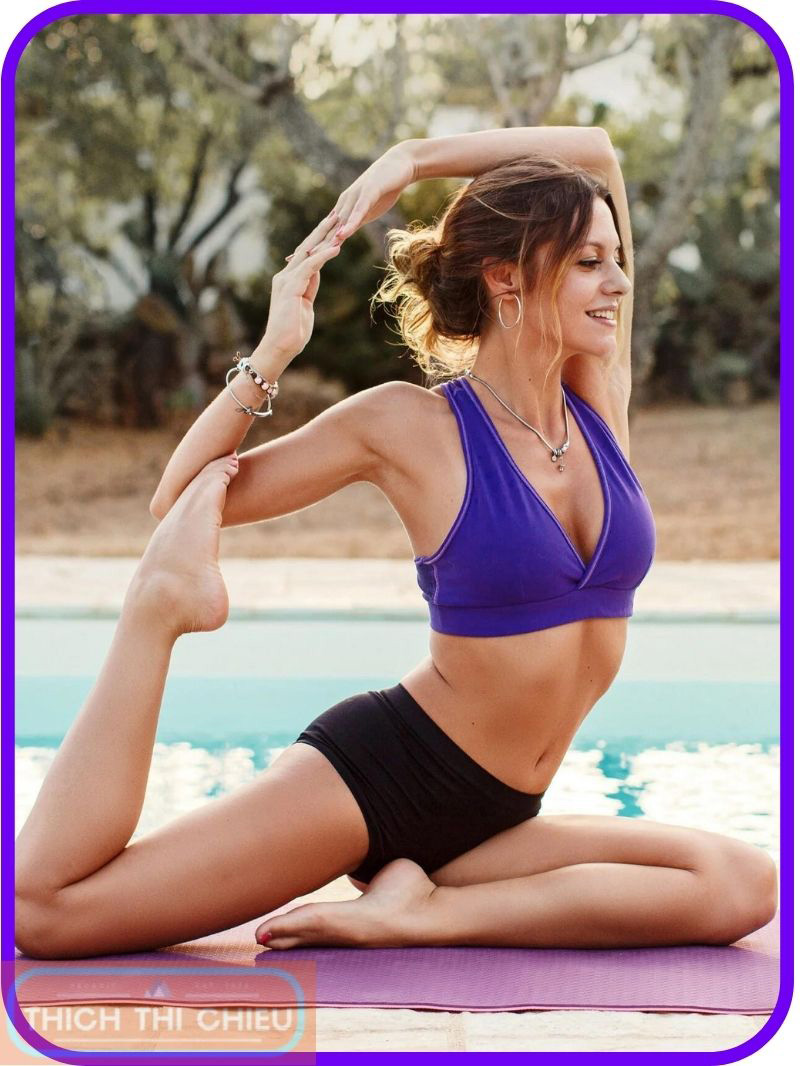
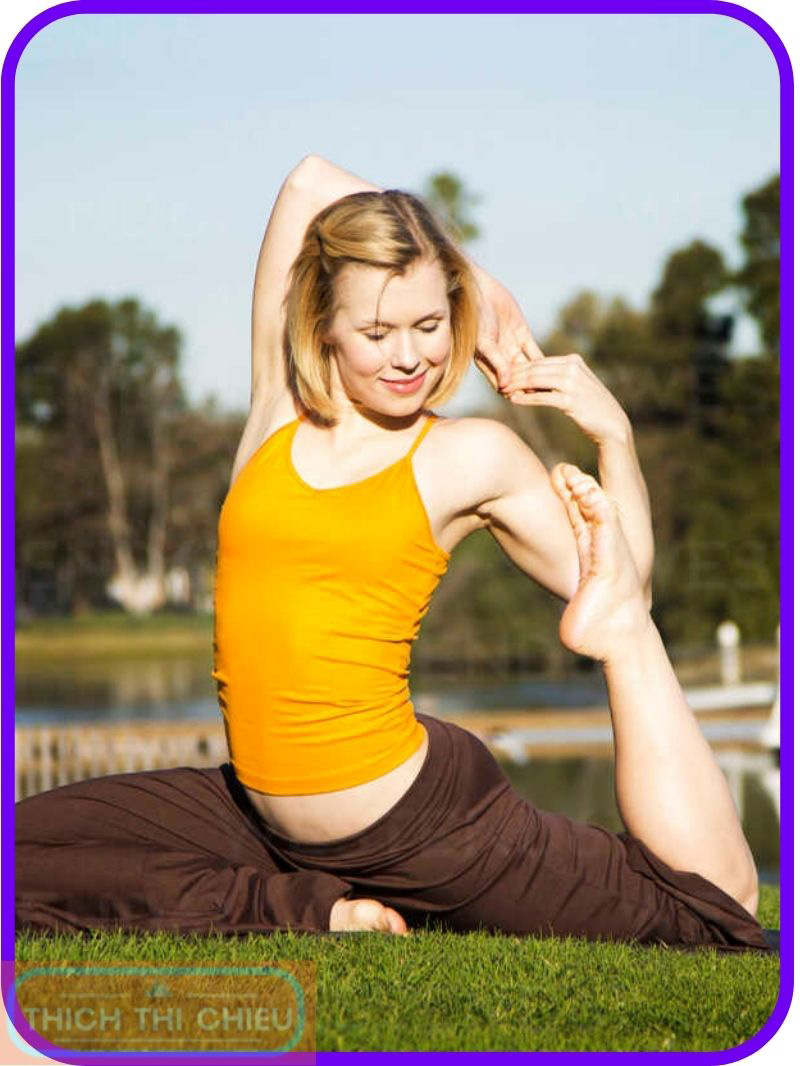
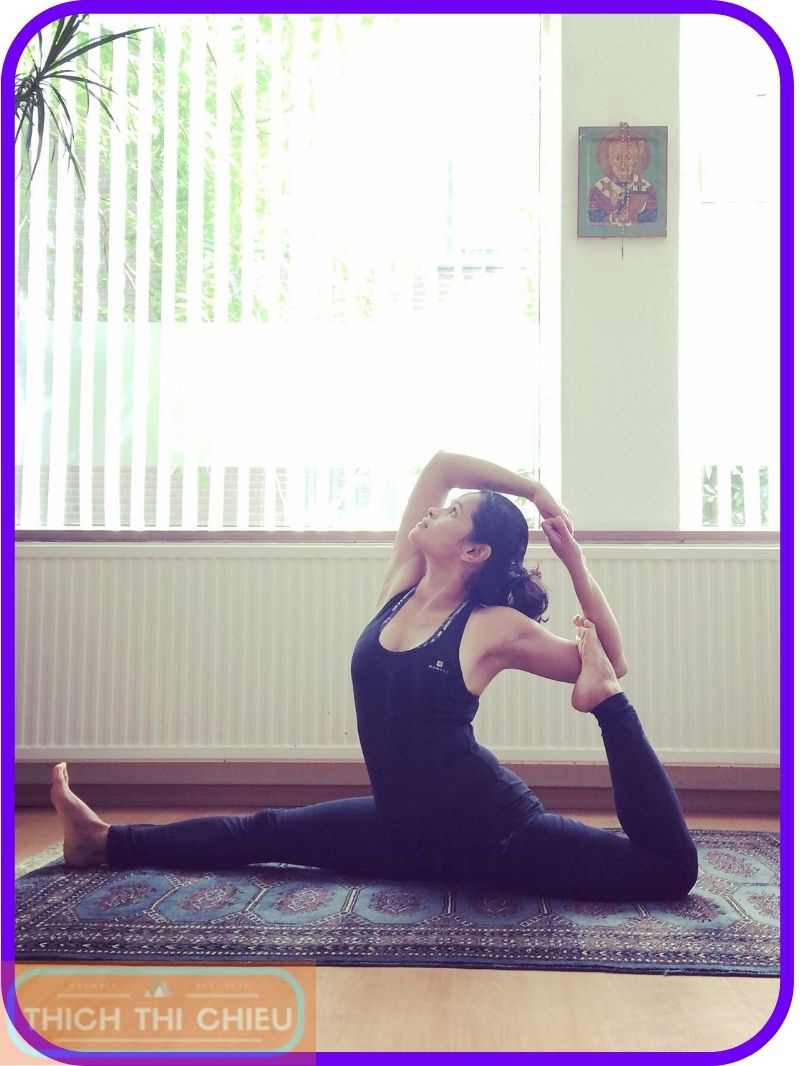
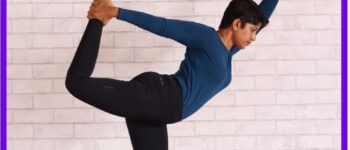




Leave a Reply